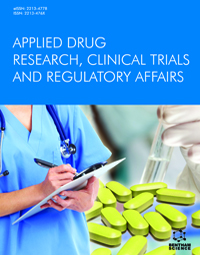Abstract
Nanotechnology is a multidisciplinary field of study that bridges chemistry, engineering, biology, and medicine. The utilization of the nanotechnological approach for the development of theranostic nanocarrier system is capable of being loaded as drug therapy/delivery and diagnostic vehicles/means. A very recent term, theranostic nanomedicine, has gained much attention as a favorable model for various types of progressive disease. Theranostic nanocarriers' strategy utilizes the diagnostic excellence mediated treatment of such illnesses that required individual therapy, such as in cancer. These can impart an essential role in improving public health regarding high-stress lifestyle-related challenges in diabetes, asthma, cancer, hypertension, and many infectious diseases, as the diagnosis of these circumstances and the treatment strategy, are also possible with biomedical applications of these nanomaterials. It includes benefits from both worlds: highly powerful nanocarriers to drug delivery and diagnosis spawned the concept, enabling the emergence of personalized medicine. This chapter discusses the state of various nanocarriers' art in the form of NPs and nanodevices applications in medical diagnosis and disease treatments. It presents key insights and current advancements into the intriguing biomedical applications of NPs, including bioimaging of biological surroundings and their significance as a critical early detection tool for various diseases. It also describes their types and limitations concerning conventional means. The topic has attracted significant attention and interest as diagnostic and treating nanocarriers' can target various illnesses faced by the healthcare providers suggested by several researchers over the past decade. Additionally, with recent advances in nanoscience and nanoscale materials, the creation of different diagnostic or therapeutic devices is also discussed briefly. Along with nanocarrier systems' therapeutic and diagnostic aims, physicochemical advantages even considerable potential to be studied concerning health system, which is useful for protecting active drug molecules from degradation, targeted and site-specific drug deliveries are also discussed. Despite the numerous technological, scientific, regulatory, and legal hurdles that nanomedicine faces, researchers are driven to develop new medications and nanomedicine devices. As a result, the development of nanoparticlebased drug delivery and diagnostic devices could help improve patient comfort and convenience while also lowering treatment costs.






















